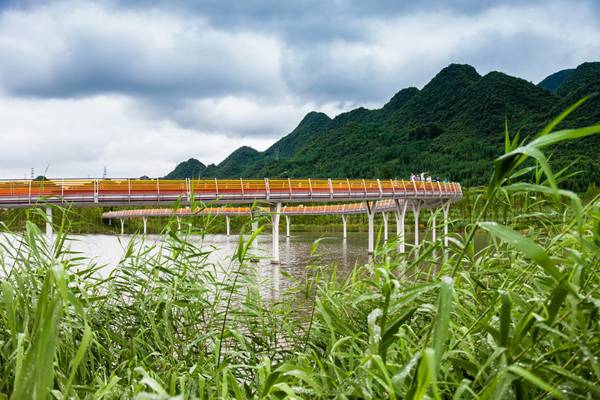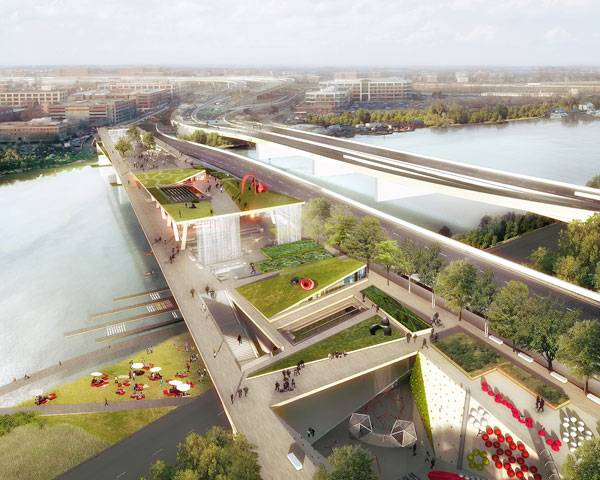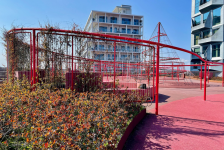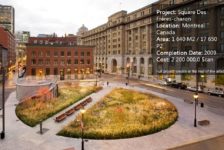Architectural Engineering and it’s potential to create exciting opportunities for landscape architecture. Since its early days, landscape architecture has evolved to become a diverse and all-encompassing discipline that shares common ground with a range of other professions, including engineering, architecture, ecology, horticulture, and arboriculture. At one time, landscape architecture was primarily concerned with the use and arrangement of land; today, the profession increasingly finds itself drawn into areas not directly connected to the surface of our earth. For example, if one looks to many of the most famous (or infamous) projects of recent years, it is immediately apparent that projects that garner attention are to be found high above the ground or suspended over water. And to what do we owe this expansion of our profession? Architectural engineering.
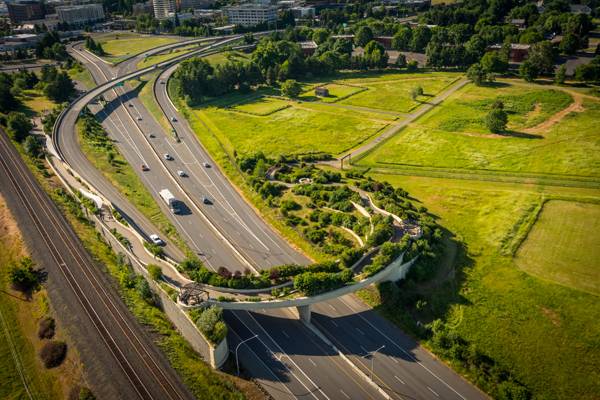
Architectural Engineering – Aerial shot of Vancouver landsbridge. Photo credit: Bruce Forster
Opportunities for Landscape Architecture Offered by Architectural Engineering
Looking at our list of Top 10 World Class Landscape Architecture Projects of 2014, it’s easy to see that many of them rely on architectural engineering in some way — to either achieve their design goals, re-purpose existing infrastructure, or to achieve water sustainability.
Arguably, without architectural engineering, there would be no High Line, as there would be no engineer (Robert Silman Associates and Buro Happold) to access the existing structure and declare it safe for planting and public access, or to achieve features such as the “The Flyover” and “The Cutout”. Without architectural engineering, there could be no School of Art, Design, and Media at Nanyang Technological University in Singapore. These projects could only be achieved with the employment of architectural engineering. WATCH: Nanyang Technological University SchoolHow to Employ Architectural Engineering in Landscape Architecture
The most important thing when considering employing the principles of architectural engineering is to know one’s own limits — and when to employ the services of an engineer. Related Articles:
- Top 10 Pedestrian Bridges
- Moses Bridge : Walking Through Water
- 40 Million Dollar Bridge Wows Pedestrians
In most cases, an engineer will need to be engaged if the design is “non-standard”. If the load-bearing capacity of a structure needs to be assessed or technical drawings produced to satisfy planning permissions or local building codes, then the services of an engineer will be required.
Future Opportunities for Landscape Architecture using Architectural Engineering
No doubt projects such as the High Line have sparked a flurry of copycat projects around the world, including Chicago’s Bloomingdale Trail and Park and the rather aspirational efforts of Rael San Fratello Architects, who have designed Bay Line; a whole “hanging neighborhood” and “sky park” consisting of three kilometers (1.92 miles) of bicycle paths, climbing walls, gardens, and meadows. WATCH: Bloomingdale Trail It seems the repurposing of existing (redundant) infrastructure is a theme set to continue in landscape architecture for some time to come. However, there is an emerging trend in our profession that seeks to utilize architectural engineering to place landscape architecture on an equal footing with architecture in a wave of purpose-built green infrastructure. These projects go beyond repurposing existing structures and actually design items of green infrastructure intended to impress and attract attention.
The Future of Architectural Engineering in Landscape Architecture
The infamous proposed Garden Bridge in London has garnered much criticism recently for being an expensive (£175 million/$268 million), purpose-built structure that many believe isn’t needed. Critics claim that the proposed bridge is little more than a “vanity project” of London Mayor Boris Johnson, designed to be a public spectacle more than a useful piece of green infrastructure or landscape architecture.
But if it goes ahead, the Garden Bridge will signify an interesting turn in architectural engineering for landscape architecture — a paradigm shift from repurposing redundant infrastructure and empty spaces to direct investment in newly engineered structures for landscape. A Growing Trend This trend seems set to continue, with projects such as Pier 55 in New York City and the 11th Street Bridge in Washington, D.C., both proposing new engineered infrastructure for the sole purpose of providing public open space. None of these proposed projects would be possible without significant architectural engineering and, of course, investment. What’s Next for Landscape Architecture? Whether you agree with it or not, the immediate future for landscape architecture seems to include a significant number of projects that propose to provide purpose-built green infrastructure, many divorced from the ground by either being suspended in the air or above water. A lot depends on resolving issues of funding and public consultation, but if these projects prove to be a success, then could we be seeing a new era for landscape architecture? A future in which our profession is engaged in designing public open spaces that previous generations could only have dreamed of? Could architectural engineering assist us in achieving floating parks and garden bridges in every city? Whatever the future holds, it seems certain that architectural engineering will open up new opportunities for landscape architecture. Recommended Reading:- Principles and Practice of Engineering: Architectural Engineering Sample Questions and Solutions by Mark McAfee
- Standard Handbook of Architectural Engineering by Robert Brown Butler
Article by Ashley Penn Return to Homepage
Published in Blog


